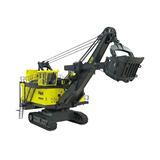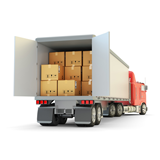Key Takeaways
- It's a critical minerals boom. While iron ore and coal remain strong, the current upswing is supercharged by demand for critical minerals like lithium, cobalt, and rare earths, creating new opportunities in regions across Western Australia, Queensland, and NSW.
- The ripple effect is massive. For every $1 of direct mining activity, an additional $0.78 is generated in other parts of the economy. The biggest beneficiaries are the transport, construction, and equipment supply sectors.
- Transport demand is soaring. The logistics challenge of moving bulk commodities and supplies is creating unprecedented demand for heavy-duty trucks, rail freight services, and skilled operators, particularly in regional areas.
- Infrastructure is a key bottleneck. The boom is driving a surge in construction projects for new haul roads, rail links, port expansions, and worker accommodation villages, creating huge opportunities for civil construction firms.
- Getting "mine-ready" is essential. To win contracts, your business must demonstrate a robust WHS management system, meet high standards for equipment maintenance, and have the financial capacity to manage the long payment cycles typical of the resources sector.
- "Mine-ready" means compliant: To win mining contracts, you must prove you have a robust WHS management system and the financial stability to handle 60-90 day payment terms, as these are non-negotiable entry requirements.
Introduction: More than just a hole in the ground
Australia's resources sector is once again firing on all cylinders. In 2025, a powerful combination of strong demand for traditional commodities and a global surge in the quest for critical minerals is fuelling a major industry upswing. According to the Department of Industry, Science and Resources, Australia's resource and energy export earnings are forecast to remain at near-record levels, underpinning significant new investment in mine sites across the country.
But the impact of this boom extends far beyond the mine gate. A thriving resources sector creates powerful ripple effects, generating a wave of demand that flows directly into the transport, construction, and industrial equipment sectors. For a small or medium-sized business in these industries, this upswing represents a generational opportunity for growth. This article explores the key downstream impacts of the current mining boom and provides a practical guide on how your business can strategically position itself to capitalise on the immense opportunities it presents.
The transport and logistics surge
A mine's output is worthless until it can be moved. The sheer scale of modern mining operations creates an enormous and complex logistics challenge, placing immense demand on Australia's transport network. The impact is felt across several key areas:
- Heavy Haulage: The most visible effect is the demand for heavy-duty road trains and trucks to move ore from the mine to processing plants or rail heads, and to transport essential supplies like fuel and equipment back to the site.
- Rail Freight: For major bulk commodities like iron ore and coal, rail is the primary mover. This drives demand not just for freight services, but for the maintenance of thousands of kilometres of track and rolling stock.
- Port Services: Australia's resource ports, from Port Hedland in the west to Gladstone in the east, are operating at high capacity, creating demand for everything from pilotage and tug services to material handling equipment like conveyors and loaders.
A realistic scenario: The regional transport operator
A family-owned transport company in regional Western Australia has a fleet of 20 trucks. A new lithium mine opens 200km away, and suddenly they are inundated with requests for haulage contracts. While the revenue opportunity is massive, it presents significant challenges: they need to rapidly acquire new trailers, find qualified drivers in a tight labour market, and prove their safety systems meet the stringent requirements of the mining company. This is the reality for many businesses on the frontline of the boom.
The construction and infrastructure boom
A new mine is not just a pit; it's a massive construction project that requires a vast ecosystem of supporting infrastructure. This creates a multi-billion dollar pipeline of work for the construction sector.
According to the Minerals Council of Australia, the industry has a strong pipeline of new projects, each requiring significant construction work. Key areas of opportunity include:
- Civil Works: Building essential infrastructure like haul roads, access roads, tailings dams, and foundations for processing plants.
- Non-Process Infrastructure (NPI): Constructing the buildings that support the mine, such as workshops, administration offices, and warehouses.
- Worker Accommodation: With many mines located in remote areas, the construction of high-quality accommodation villages is a major source of work for building companies.
- Public Infrastructure: The boom puts pressure on public infrastructure, often leading to government investment in upgrading highways, ports, and community facilities that support the mining region.
The equipment supply and maintenance demand
Every stage of this ripple effect is powered by heavy machinery and industrial equipment. The mining upswing creates a massive, sustained demand for the supply, maintenance, and repair of these assets.
- New Equipment Sales: Mining companies and their major contractors are in a constant cycle of purchasing and replacing their primary fleets of haul trucks, excavators, and loaders.
- Support and Ancillary Equipment: The demand extends to a huge range of support equipment, from the graders and water carts used in construction to the forklifts and cranes used in logistics and maintenance.
- Maintenance and Repair Services (MRO): This is the most significant opportunity for many SMEs. The harsh Australian conditions mean that mining and transport equipment requires constant maintenance. Businesses that specialise in areas like hydraulic repair, auto-electrical services, heavy-duty mechanics, and fabrication are in extremely high demand. A well-maintained fleet is critical for meeting the uptime requirements of mining contracts.
Positioning your business to win: Getting "mine-ready"
Capitalising on the mining boom requires more than just having the right skills or equipment. The resources sector operates under some of the strictest safety and commercial standards in the world. To get your foot in the door, you need to be "mine-ready."
- Safety is paramount. You must have a documented and implemented Work Health and Safety (WHS) management system. This is not just a folder on a shelf; you will need to provide evidence of risk assessments, safe work procedures, and staff training records.
- Commercial diligence. Mining companies have long and complex procurement processes and often have extended payment terms (60 or even 90 days). You must have the cash flow to manage these long cycles.
- Equipment compliance. Any equipment you bring to a mine site, whether it's a vehicle or a power tool, will be subject to rigorous inspection to ensure it meets site safety standards (e.g., ROPS/FOPS on vehicles, regular electrical testing and tagging).
For many SMEs, the best entry point is not to contract directly with the mining giant, but to become a trusted sub-contractor to the larger Tier 1 construction and logistics firms that service the mines.
Conclusion
The current Australian mining upswing is a powerful engine for national economic growth, and its benefits extend far beyond the resources sector itself. For savvy business owners in the transport, construction, and industrial equipment industries, it presents a significant opportunity to secure long-term contracts and drive substantial growth. By understanding the specific needs of the sector, investing in compliant safety systems, and strategically positioning your business to service this demand, you can ride the wave of this boom to a more prosperous and resilient future.









